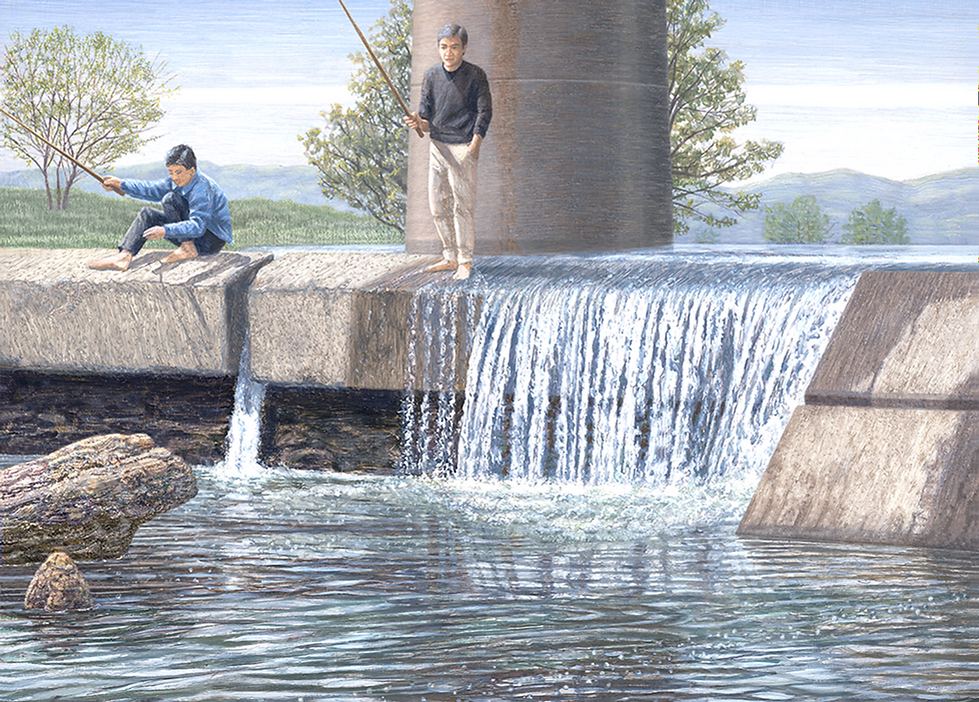
Detail of Fishing
FISHING: the artist's view
SKU: 2
The monumental railroad pillar and the weighty blocks of the dam form a massive, upside-down T that hangs from the top of the picture, anchoring the whole composition (or the organization of shapes, colors, lines and textures)–and even holds up the expanse of water that takes up a third of the picture below. In contrast to this massive T are two airy "windows" on either side that open up on soft, blue sky and distant hills.
This symmetrical arrangement is broken up by various, offset angles: the rock on the lower left that points back up into the center of the picture and the concrete ramp on the right pointing back down to the water below–as well as by the father and son weighted to the left side of the picture with their fishing poles angling the viewer back into the center. None of these diagonal lines converge on an obvious, central point in the picture but, in a loose and more interesting way, work together to direct the eye back into the middle. There the waterfall flows downward, breaking up the bottom of the T-shape while counteracting the upward thrust of the railroad pillar. But this downward flow of water wasn't enough to offset the upward thrust of the pillar, so I added the subtle cloud layer across the sky. The cloud layer parallels the top of the dam, holds the pillar in check and prevents the two "windows" from flowing off the top of the picture. So the subtle cloud layer is one of several important horizontal lines that balance the strong verticals in the composition.
The large rock in the lower left, also points upward to help support the weight of the giant T from below, and to counteract the downward direction of the ramp on the right.
This isn't to say that I was consciously thinking of all this when I took the original photos–or even when I was painting the original painting, or later working on this giclée print. At the time, a lot of this was intuitive. The scene at the river drew me because it had subject matter, psychological impact and compositional elements that I liked and would fit my painting style. So I spent considerable time there, taking photographs that intuitively looked right in the viewfinder, or that contained information I might later need when painting. Although analysis helps solve compositional (overall balance) problems at various points in the painting process, most in-progress decisions are intuitive–and major analysis like this comes mostly at the end.
The composition of this print is the stable yet dynamic environment for the father and son's interaction–and makes silent comment on their relationship. In terms of psychological impact, the compositions are almost like another character in my giclée prints. Much of the impact or "meaning" of the prints is in their compositions. The compositions create the space in which the people exist–a cohesive, dynamic, unselfconsciously confident space that both reflects and defines the spirit of the people in them. It is a space where you the viewer stand on the very edge and are invited in.

Detail of Fishing

Title: Fishing Size: 15.4 x 20.3" / 39.2 x 51.6 cm $172 Edition: 299 (Signed/Numbered/Unframed) Date: 2024